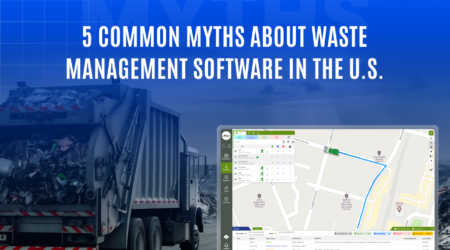Fleet tracking in Colorado: Ensuring safety on snow routes and mountain terrain
Colorado might be known for its scenic beauty and ski resorts, but it is also a critical corridor for freight and service fleets. Most of the fleet navigate to some of the most challenging road conditions in the United States. According to the Colorado Department of Transportation (CDOT), over 13,000 commercial vehicles travel across the I-70 mountain corridor daily, with winter months bringing a spike in weather-related incidents and delays. Along with steep grades and unpredictable snowfall, the region enforces mandatory chain laws that can catch unprepared operators off guard. For businesses running delivery fleets, utility trucks, construction vehicles, or service vans in Colorado, poor visibility and ice-covered roads can lead to delays, damages, and operational risks.
In such an environment, advanced fleet tracking systems provide essential support. They help operators gain real-time visibility, improve driver safety, and stay aligned with local mandates. In a region where nature constantly tests logistics, smarter fleet management opens the door to safer and more efficient operations.
Challenges faced by fleets in Colorado
Unpredictable mountain weather and snow closures
Fleet operators often struggle with sudden snowstorms, black ice, and road closures, especially along routes like I-70, US 285, and US 550. Without live weather data or road condition visibility, fleets risk delays, accidents, and missed deliveries.
Mandatory chain law compliance
Colorado enforces strict chain laws during the snow season. Failure to comply can lead to hefty fines or being turned away at checkpoints. Manual compliance tracking puts unnecessary pressure on drivers and fleet managers.
Driver safety on steep and winding terrain
Mountain routes often include sharp turns, steep inclines, and high-altitude passes. In such environments, driver fatigue, harsh braking, and risky driving increase the risk of accidents and vehicle wear.
Limited network coverage in remote regions
Many fleet operations in Colorado cover rural or mountainous areas with patchy network signals. This makes it hard to track vehicle location, communicate with drivers, or respond quickly in case of emergencies.
Wear and tear from extreme terrain
Cold temperatures, salt-treated roads, and long uphill stretches accelerate wear on tires, brakes, and engines. Without proper maintenance tracking, vehicles may break down mid-route, increasing operational costs and safety risks.
How fleet tracking software supports operations in Colorado
Live vehicle tracking with weather visibility
Fleet managers can monitor every vehicle in real time, even in the most remote mountain routes. When paired with live weather overlays and traffic data, they can proactively reroute vehicles around closures, snowstorms, or slowdowns to keep operations moving safely.
Chain law compliance monitoring
With proper software integration, operators can receive alerts about chain law active zones along specific Colorado routes. Drivers can be informed ahead of time and guided to safe stops for chain installation. This reduces non-compliance risk and delays.
Driver behavior tracking for safety
Driver fatigue, harsh braking, and over-speeding on steep terrain are serious concerns. The software helps monitor these patterns and promotes better habits through coaching or alerts. This leads to safer driving and fewer on-road incidents.
Reliable communication in low-network areas
Many fleet tracking systems store data even when signal drops, then sync once the network is restored. This ensures critical vehicle and route data is never lost, giving managers full visibility over remote operations.
Maintenance reminders for rough road wear
The software automatically logs mileage, usage patterns, and stress factors like altitude or frequent braking. Based on this data, it triggers maintenance reminders for brakes, tires, and engine checks. This helps in keeping vehicles fit for Colorado’s tough terrain.
Results: Smoother, safer, and more reliable fleet operations
Fewer weather-related delays
By using real-time tracking with weather visibility, fleet operators were able to reduce snow-related delays and avoid blocked routes. This led to more on-time deliveries, even during peak winter.
Improved compliance with local regulations
Fleet managers were notified about chain law zones ahead of time. This helped ensure compliance and reduced fines, roadside delays, and enforcement penalties.
Enhanced driver safety and accountability
Driver behavior tracking helped reduce speeding, harsh braking, and risky driving on mountain terrain. Fleets saw a noticeable drop in safety incidents and driver complaints.
Better asset health and longer vehicle life
With timely maintenance reminders based on terrain conditions, fleets experienced fewer breakdowns and reduced wear-and-tear damage. This lowered overall repair costs and improved asset reliability.
Higher customer satisfaction and operational control
Fleets gained more control over mountain deliveries, utility services, and seasonal operations in Colorado. The ability to monitor vehicles even in remote areas translates to better planning, faster response times, and stronger client trust.
Conclusion
Fleet tracking in Colorado demands more than just tough vehicles; it requires smart planning, real-time visibility, and full control over safety and compliance. From unpredictable snowstorms to steep mountain passes, the region challenges even the most experienced fleet operators. By adopting an advanced fleet tracking system, businesses gain the tools they need to face these challenges head-on. With live tracking, driver monitoring, and automated maintenance alerts, fleets become safer, more efficient, and better prepared for the unique terrain of Colorado. For businesses aiming to expand or optimize operations in this region, the right software can be the difference between a delayed delivery and a successful journey.

